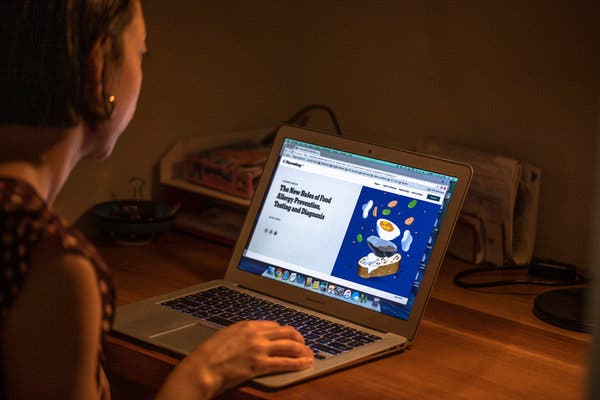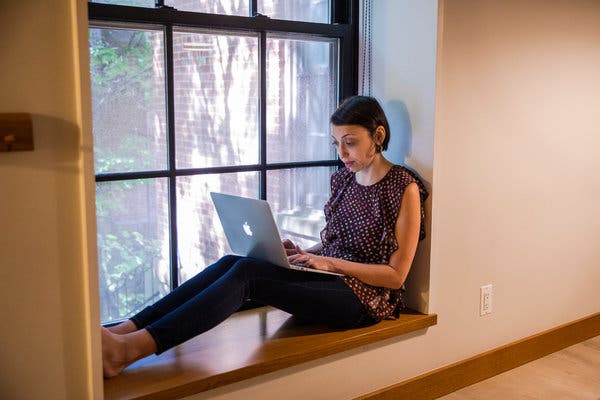How do New York Times journalists use technology in their jobs and in their personal lives? Jessica Grose, the editor of NYT Parenting, discussed the tech she’s using.
Tell us about The Times’s new Parenting initiative.
Parenting is a glutted field, so we wanted to make sure we were bringing something new to the coverage area.
We realized quickly that evidence-based, heavily researched guidance for aspiring parents and parents of very little kids was the sweet spot where The Times could really make a difference in people’s day-to-day lives.
We also wanted to provide a lot of information for parents themselves: about how their relationships, work lives and self-conception may have changed when they had kids. Parenting includes a stand-alone website, like The Times’s Cooking product, and we have a weekly newsletter, which you should sign up for!
We’re still in beta, and there’s lots more coming in 2020, so look out.

So what tech tools help you do the job?
While most of our team is in New York, we have an editor in Atlanta, and engineers in Seattle, San Francisco and Portland, Ore., so tools that help with remote work are essential.
Slack, first and foremost — don’t sleep on Slack calls, which I find are better for quickly sharing screens and designs than Google Hangouts.
We’re also trying out a Google Jamboard, which is an “interactive business whiteboard” — a description that makes me want to die. The team named our Jamboard “Pumpkins.” We just had a rousing cross-functional session on Pumpkins, which involved lots of virtual stickies.
I report and write the newsletter every week, and I use either my iPhone or an extremely ancient Olympus digital recorder to record interviews.
Are there any parenting sites that you find useful and, if so, which ones and why?
Common Sense Media is an excellent resource for all media recommendations. I particularly like using it for apps. I feel fairly equipped to assess whether TV or movies are appropriate for my kids, but I am often at a loss when it comes to apps.
The sites I use most as a reporter and an editor are the Centers for Disease Control and Prevention; the American Academy of Pediatrics’ website, Healthy Children; and PubMed, where I look up studies all the time. Part of the usefulness of the Times Parenting site is that we read all of the research and recommendations from experts and distill it down to answer your questions in a readable, accessible way.
[Is your child a digital addict? Here’s what you can do.]
Tech use among children is a big issue, including questions about how early children should be using tech, how long each day they should be spending on screens and the like. What do you tell parents who ask about that?
The American Academy of Pediatrics suggests that kids under 18 months should use screens only to do video chats with relatives, and that kids under 6 should have only one hour a day of “high-quality programs” that they watch with grown-ups, who can contextualize the shows for them.
While I believe in the A.A.P. as an ideal, I also am a person with two kids, a full-time job and a husband who also has a full-time job, which means we are tired and our household does not always live up to the A.A.P. standards. During the week we follow the guidelines, but on the weekends our kids definitely zombie out in front of the TV for several hours at a clip. (But they also go outside, and read, and we take them places, and they are not totally feral.)
I also really love TV and movies, and think they are underappreciated as a way that kids can bond with one another. If you sit and listen to preschoolers chat, you will hear them talk about which PJ Masks character is their favorite and hear them do fantasy play about Wakanda. Even kindergartners have water-cooler talk.
[Read Jessica Grose on children’s TV shows you can tolerate watching.]
And some apps, like Me: A Kid’s Diary, are genuinely interactive and educational. I believe Endless Alphabet and Endless Reader helped my older daughter learn to read and spell.
Finally, many of these technologies are new, and we really don’t know yet how they might affect our kids and their brains. I tend to not be particularly alarmist about it, though I no longer let my children, who are 3 and 6, watch YouTube, after the reporting about the videos that slipped past kid-approved filters.
So TLDR: I believe in the experts, and I believe in research, and I think most things are reasonable in moderation. My overall recommendation about most things tech is to use common sense and don’t freak out.
Outside of work, what tech do you love?
We have a Google Home, which has helped me avert many a meltdown by playing dance music. My kids are partial to “Shake Your Groove Thing,” by Peaches and Herb, and honestly I have no idea where they picked it up, but I’m not mad about it. Also, you haven’t lived until you hear a 3-year-old say, “O.K., Google, play ‘Old Town Road.’”
While we are continuing to develop our product, I look at a lot of other products outside the parenting space for ideas and inspiration. And the ones that I have found most addictive, useful and/or pleasing in my nonwork life are the iOS apps from TheRealReal and FoodKick.
TheRealReal is designer consignment, and it did an excellent job of building filters that work for the best bespoke shopping experience. I have a saved search of long-sleeve dresses in my size that refreshes with new pieces in my price range every day.
FoodKick, which is a grocery delivery app, is essential to my functioning in the world as a working mom because it saves my family so much time shopping. I love the way it lets you browse previous orders, but also the way its home page is designed for browsing. I’m often ordering food it suggests because it’s in season or because it’s part of a recipe FoodKick is pushing.








